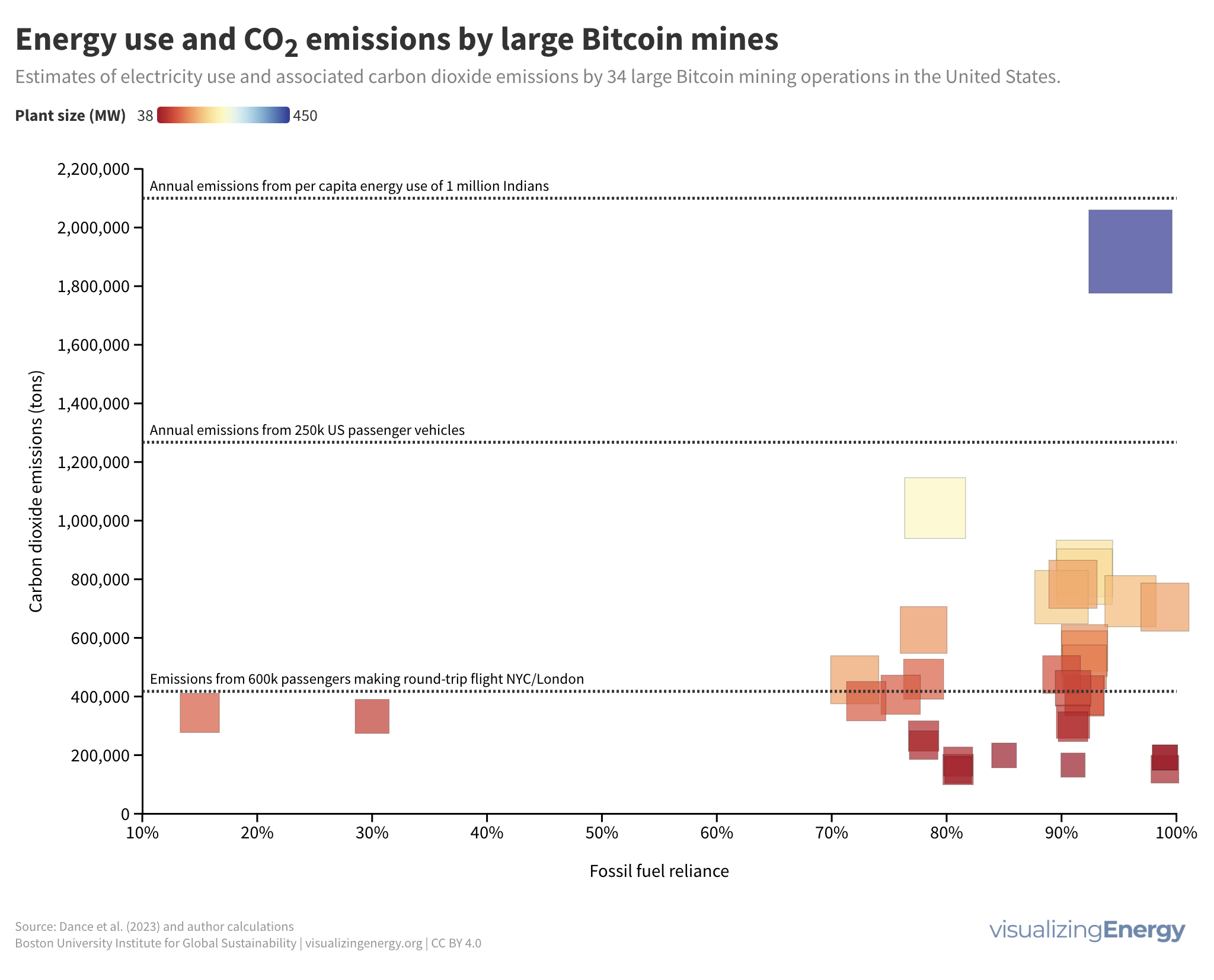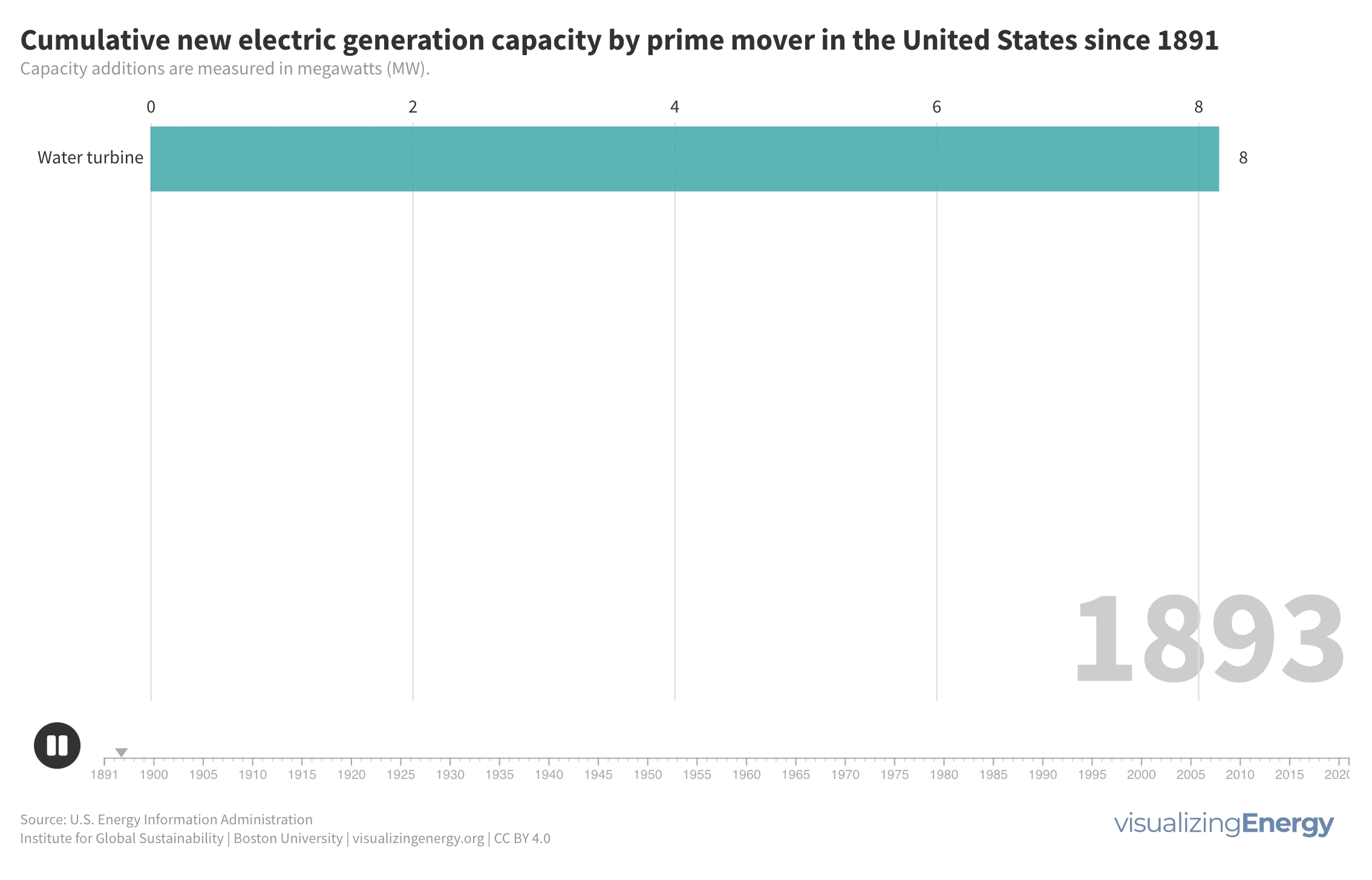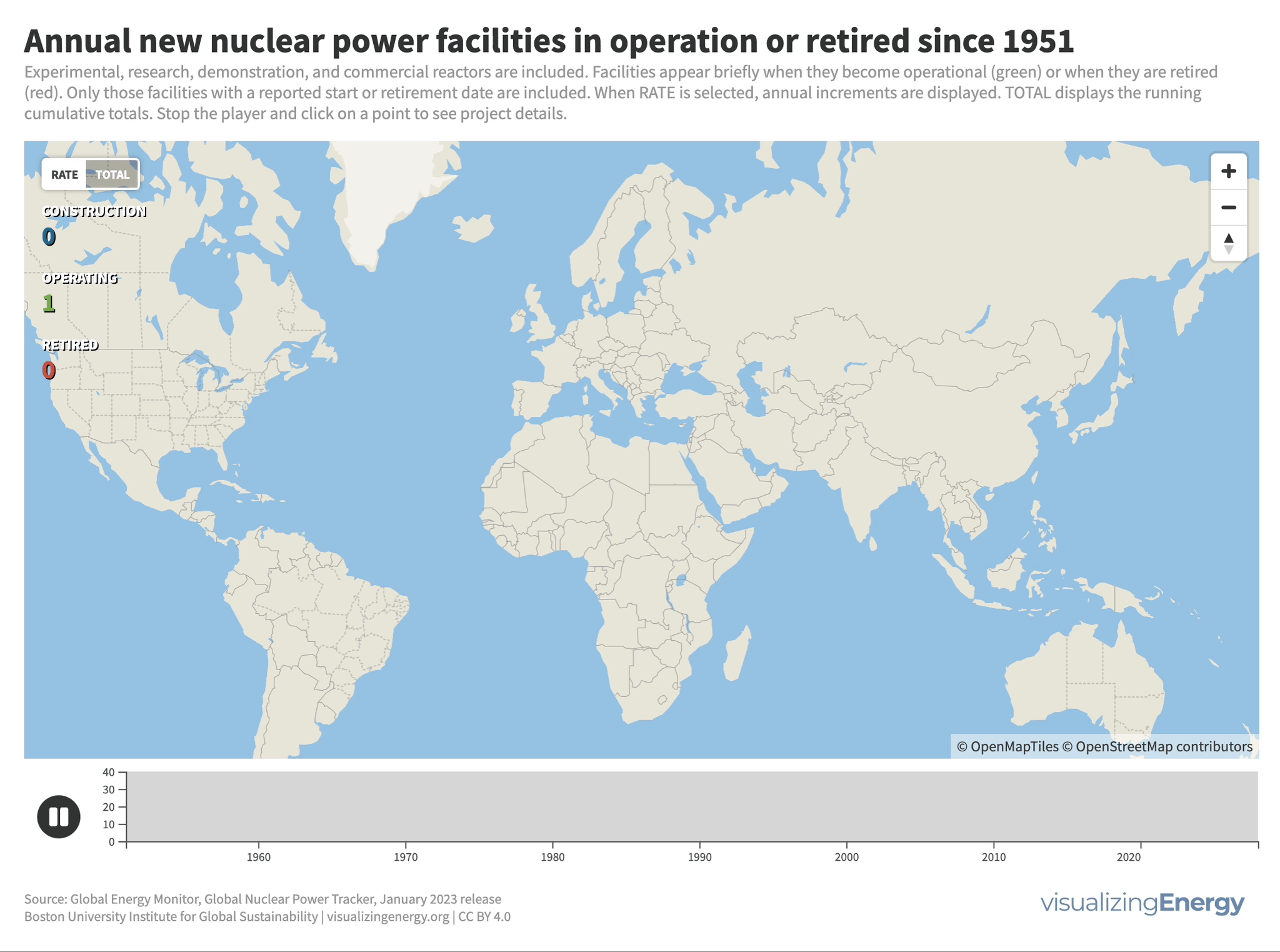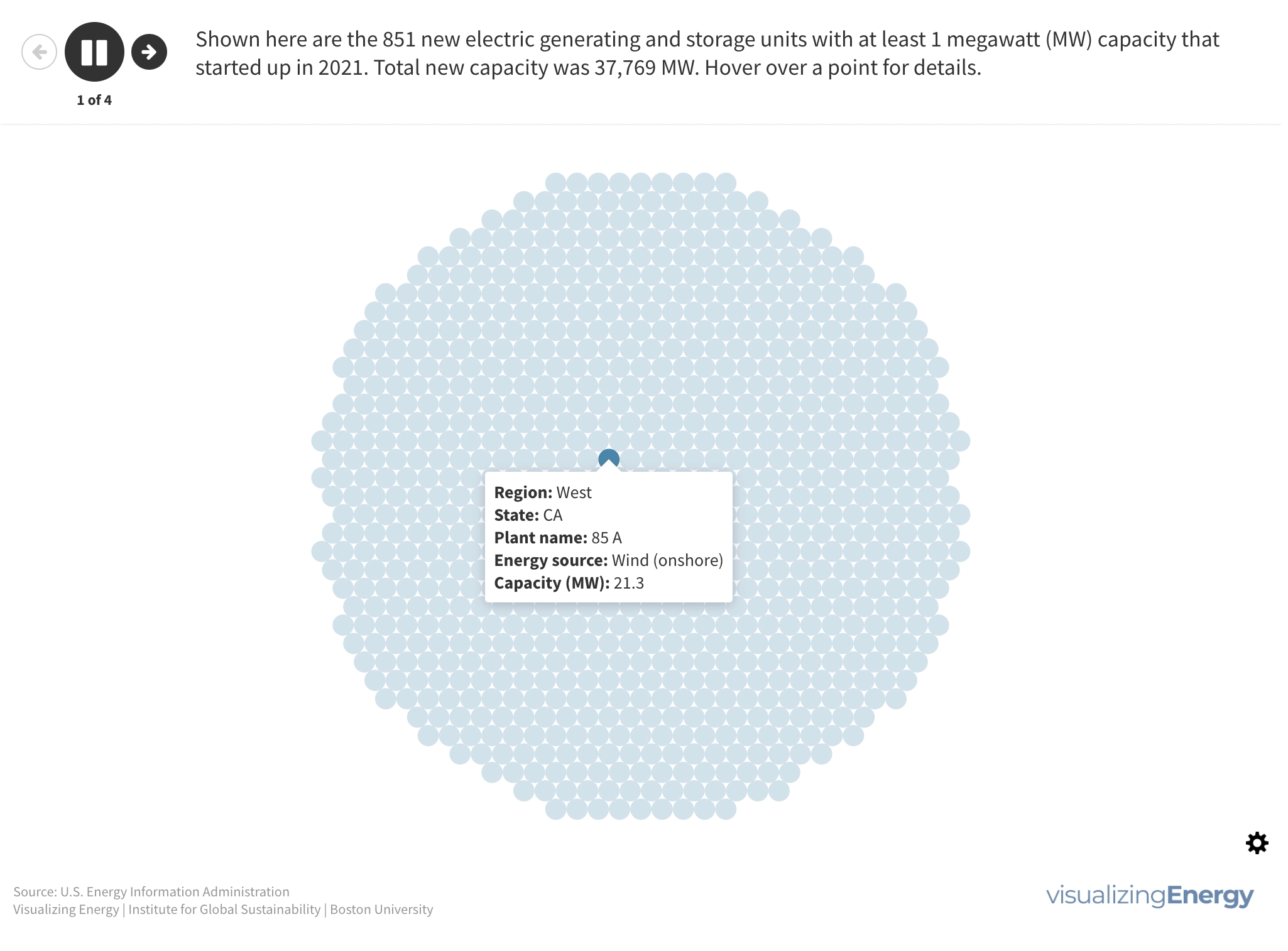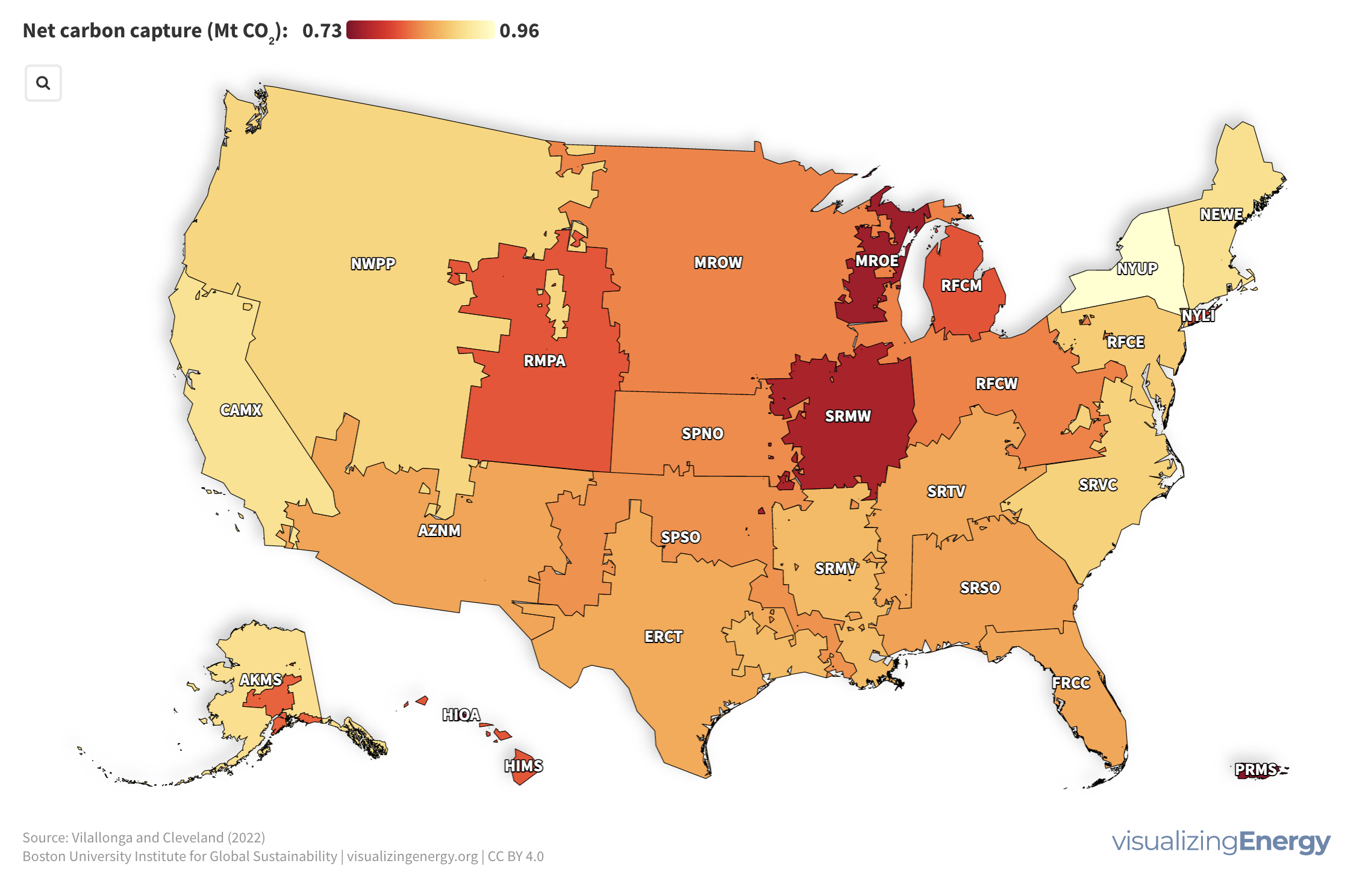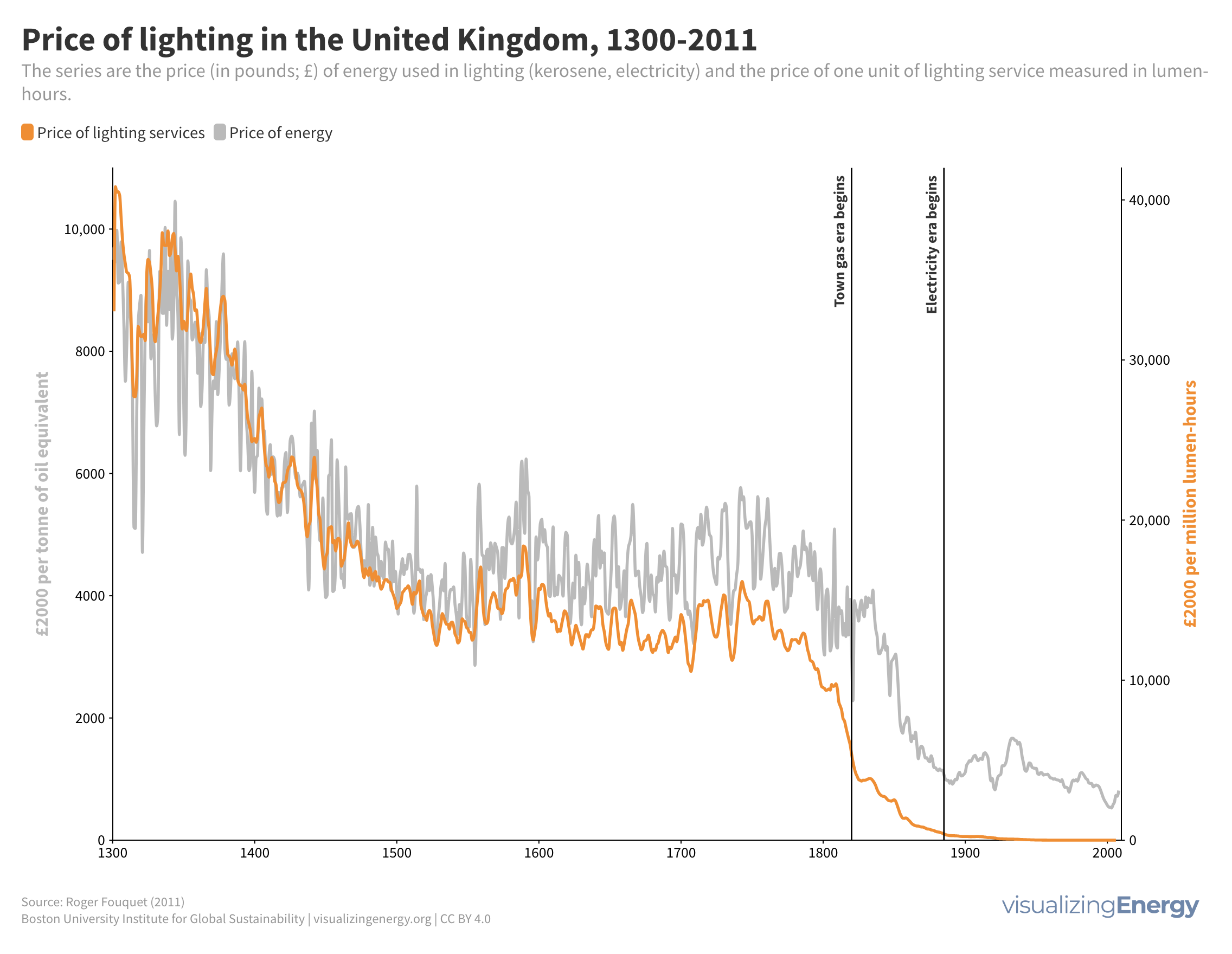
How the price of lighting decreased 12,000-fold in the United Kingdom
The transition from traditional lighting methods to modern illumination in the United Kingdom has had significant social, economic, and environmental consequences. Historically, lighting services relied on candles made from animal fat, but the 19th century saw the introduction of new fuels such as town gas, kerosene, and eventually electricity.

